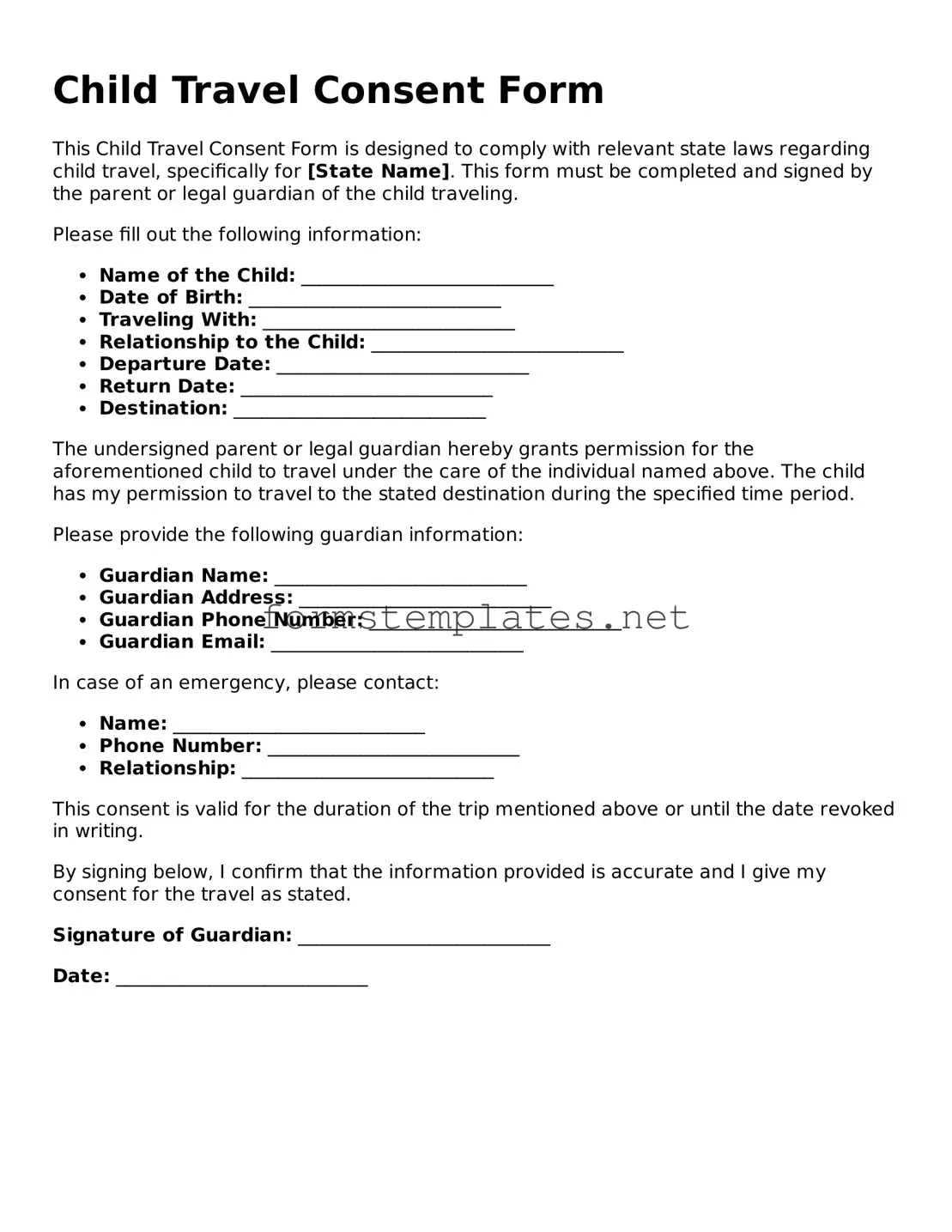A Child Travel Consent Form is a legal document that allows a child to travel without one or both parents or guardians present. This form is often required by airlines, border control agencies, and other authorities to ensure that a child is traveling with permission from their legal guardians.
You typically need a Child Travel Consent Form when a child is traveling internationally or domestically without both parents. It is especially important if the child is traveling with a relative, friend, or a group. Some airlines and countries may require this form even if both parents are present, so it's wise to check specific requirements before traveling.
The form should be signed by the parent or legal guardian who is not accompanying the child. If both parents share custody, both may need to sign the form, depending on the travel circumstances. It is important to ensure that the signatures are notarized to add an extra layer of legitimacy.
A typical Child Travel Consent Form includes:
-
The child's full name and date of birth
-
The names of the parents or legal guardians
-
The travel itinerary, including dates and destinations
-
The name of the adult accompanying the child
-
Emergency contact information
Yes, the Child Travel Consent Form is legally binding as long as it is properly completed and signed. However, its acceptance can vary by airline and country, so it is crucial to verify the specific requirements of your travel destination.
While you can create your own form, it is advisable to use a template or consult legal resources to ensure that all necessary information is included. Many organizations and legal websites offer templates that comply with legal standards, making it easier to ensure that the form is valid.
Notarization is not always required, but it is highly recommended. Having the form notarized can help prevent any disputes or misunderstandings at border control or with airlines. Some agencies may specifically request a notarized document, so it’s best to check in advance.
What if the child is traveling with only one parent?
If a child is traveling with only one parent, that parent should carry a Child Travel Consent Form signed by the other parent or legal guardian. This form should state that the non-traveling parent gives permission for the child to travel. Again, notarization is recommended to strengthen the document's validity.
You can find Child Travel Consent Form templates online through legal websites, travel agencies, or government resources. Many of these templates are free and can be easily customized to fit your needs. Always ensure that the template complies with the laws of your state and the requirements of your travel destination.
